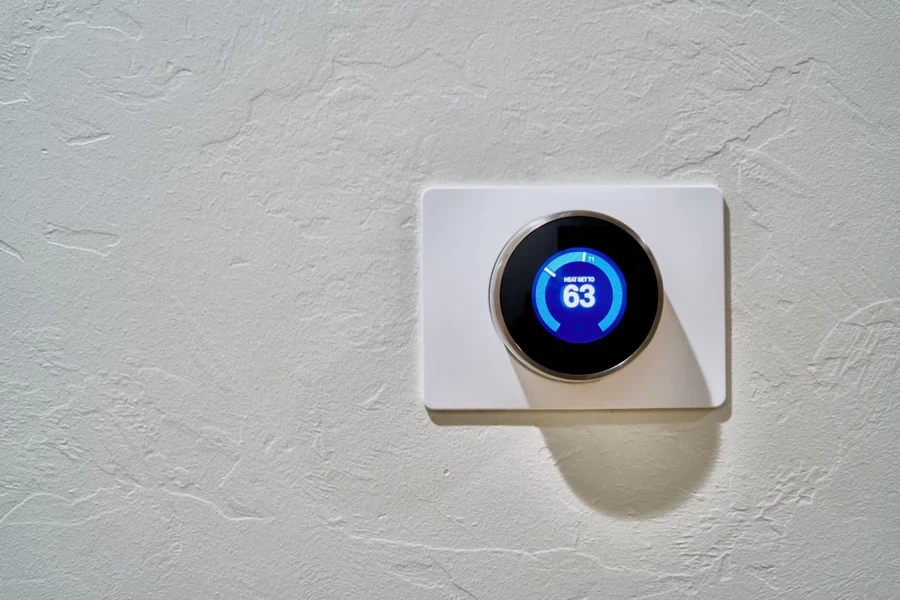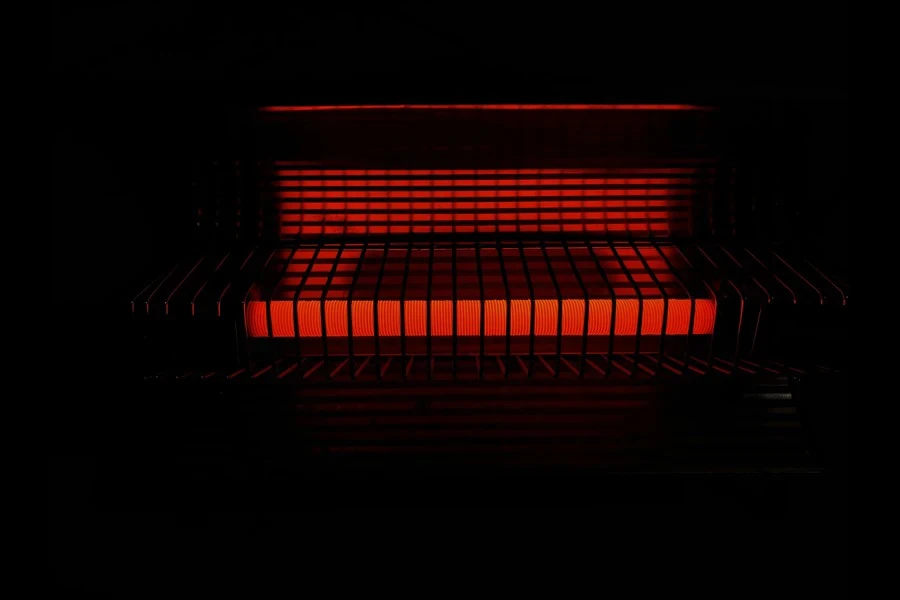I riscaldatori per magazzini sono necessari per creare un ambiente di lavoro adatto e proteggere i prodotti dagli effetti negativi delle basse temperature. Il requisito generale è un sistema affidabile e semplice che funzioni per anni senza problemi. Detto questo, riscaldare un magazzino non è così facile come alcuni pensano. Non è come accendere un interruttore del riscaldamento, come negli spazi residenziali. Ci sono molti fattori da considerare quando si cerca di capire come riscaldare un magazzino.
Al giorno d'oggi, l'obiettivo principale della maggior parte dei proprietari di magazzini è ottenere un sistema con controlli semplici. Deve produrre i livelli di calore desiderati e consumare il minimo di energia. Questo articolo informativo copre i migliori sistemi di riscaldamento per magazzini e perché vale la pena investire in questo mercato.
Continua a leggere per scoprire alcune intuizioni uniche!
Sommario
Dimensioni del mercato globale dei riscaldatori da magazzino
4 soluzioni popolari per il riscaldamento dei magazzini
Cose da considerare quando si sceglie un riscaldatore per un magazzino
Conclusioni
Dimensioni del mercato globale dei riscaldatori da magazzino

Stando alla nostra umile opinione, l'obiettivo della promozione della riscaldatori da magazzino è quello di convertire l'energia elettrica o di vapore immagazzinata nel loro sistema in energia termica. Questa struttura aiuta a riscaldare gli ambienti chiusi o i contenitori. Considerando la crescita delle strutture di stoccaggio, c'è un chiaro segnale che la domanda di riscaldatori per magazzini continuerà ad aumentare.
Si prevede che il mercato globale dei riscaldatori industriali crescerà costantemente, con un tasso di crescita annuale di 4.8% dal 2025 al 2037. Nel 2024, il mercato valeva 5.49 miliardi di dollari USA e si prevede che raggiungerà i 10.1 miliardi di dollari USA entro il 2037. I ricercatori affermano che i seguenti fattori stimoleranno la domanda di riscaldatori per magazzini:
- Aumento dell'accessibilità economica e delle fasce di prezzo basse dei riscaldatori industriali
- La riduzione del consumo energetico offerta da questi riscaldatori riduce i costi operativi
- La produzione di energia solare e da biomassa per i riscaldatori ha introdotto prodotti innovativi
- Protocolli di sicurezza migliorati, controlli digitali e funzionalità di automazione sollevano i proprietari dei magazzini dalle preoccupazioni
4 soluzioni popolari per il riscaldamento dei magazzini

Sistemi di riscaldamento ad aria calda
Il riscaldamento ad aria calda è uno dei metodi di riscaldamento dei magazzini più popolari oggi. Questo sistema funziona riscaldando l'aria all'interno di uno spazio di magazzino. L'aria calda riscalda quindi i membri dello staff e i prodotti per garantire un'atmosfera uniforme per un funzionamento ottimale.
Questi riscaldatori possono essere riassunti in tre categorie principali, di seguito illustrate:
Riscaldatori ad unità a fuoco diretto
Questi riscaldatori commerciali per magazzini sono alimentati a gasolio o gas naturale. Il carburante brucia nel sistema di riscaldamento per produrre aria calda. Pensa a termoconvettori a fuoco diretto come una griglia a gas. La fiamma entra direttamente in contatto con l'aria. L'unità aspira quindi l'aria e la riscalda facendola passare attraverso una fiamma generata dal gas.
Questi riscaldatori versatili per magazzini offrono opzioni di posizionamento flessibili: possono essere appesi al soffitto alto, appoggiati sul pavimento o montati su una parete. Quando si sceglie una posizione, valutare lo spazio sul pavimento è estremamente importante. I riscaldatori a fuoco diretto da pavimento occupano spazio prezioso che potrebbe essere utilizzato per altre operazioni di magazzino. Inoltre, considerare i requisiti di manutenzione del sistema e la facilità di accesso per la manutenzione.
Riscaldatori d'aria calda a fuoco indiretto
Il funzionamento di questi riscaldatori è simile a quello delle caldaie domestiche. L'olio o il gas utilizzati per alimentare il riscaldatore creano una fiamma nella camera di combustione. La fiamma riscalda lo scambiatore di calore. Infine, l'aria aspirata nel riscaldatore passa sopra lo scambiatore, riscaldando l'aria prima di spingerla fuori dalla struttura.
Riscaldatori a fuoco indiretto funzionano a gas naturale o a gasolio. A differenza di quelli a fuoco diretto, l'aria che riscaldano non tocca mai la fiamma. Queste unità in genere necessitano di spazio sul pavimento per l'installazione. Tuttavia, sono considerati i migliori riscaldatori da magazzino, quindi esistono molteplici opzioni di installazione. Ad esempio, possono anche essere montati sul tetto del magazzino o posizionati all'esterno, scaricando l'aria calda all'interno.

Riscaldatori ad elementi elettrici
Il sistema di questi riscaldatori elettrici assomiglia ai due menzionati sopra. Nel primo passaggio, una serpentina o uno scambiatore di calore viene riscaldato con energia elettrica. L'aria viene quindi aspirata all'interno del riscaldatore e passa sopra lo scambiatore. L'aria diventa calda e viene rilanciata nel magazzino.
Questi riscaldatori funzionano esclusivamente a elettricità, eliminando la necessità di allacciamenti a gasolio o gas. Molti responsabili di magazzino installano unità di riscaldamento elettrico sui soffitti alti per risparmiare prezioso spazio sul pavimento.
Sistema di riscaldamento radiante
Questo metodo di riscaldamento relativamente nuovo è stato installato in strutture di magazzino selezionate. Funzionano utilizzando tubi sospesi o riscaldatori a placca che emettono radiazioni infrarosse. Invece di riscaldare l'aria, questi riscaldatori riscaldano direttamente le superfici che incontrano, tra cui attrezzature, prodotti e membri dello staff.
In genere, questi riscaldatori vengono appesi al soffitto del magazzino per massimizzarne l'efficacia. Ciò consente alla radiazione infrarossa di diffondersi verso il basso in uno schema triangolare. Assomiglia a come una lampada da scrivania illumina un'area più ampia quando è tenuta più in alto. Il riscaldamento radiante funziona secondo lo stesso principio, fornendo un'ampia diffusione del calore verso il basso e verso l'esterno.
Alcuni degli riscaldatori commerciali per magazzini offrono molti vantaggi unici se installati da soli. A volte possono essere combinati per creare un sistema di riscaldamento per magazzini adatto. Quando i proprietari conoscono a fondo il funzionamento dei riscaldatori per magazzini, possono determinare meglio quali sono adatti alle diverse zone del magazzino.
Cose da considerare quando si sceglie un riscaldatore per un magazzino

Selezionare la giusta soluzione di riscaldamento al primo tentativo è importante per tenere a bada costose riparazioni o sostituzioni. Diamo un'occhiata ad alcuni dei fattori più importanti da considerare quando si investe in riscaldatori per uno spazio commerciale:
Rack
I rack sono comunemente usati nei magazzini per organizzare i prodotti e risparmiare spazio sul pavimento. Possono bloccare la distribuzione del calore nel magazzino bloccando l'aria.
Ricorda che i riscaldatori radianti riscaldano solo ciò che è direttamente esposto. Se il calore a infrarossi non riesce a raggiungere le aree bloccate da scaffali o altri oggetti, quelle aree non saranno riscaldate. Il riscaldamento ad aria calda potrebbe essere una scelta migliore nei magazzini con scaffalature estese. Questi riscaldatori commerciali possono riscaldare l'aria attorno agli scaffali, cosa che i sistemi di riscaldamento a infrarossi potrebbero fare fatica a fare.
Distribuzione del calore
La distribuzione uniforme del calore è un fattore essenziale quando si seleziona un sistema di riscaldamento per magazzini. Il calore si muove attraverso l'aria. Tuttavia, gli ostacoli del magazzino come scaffali o ripiani possono interrompere il flusso d'aria, causando un riscaldamento non uniforme. La distribuzione non uniforme del calore ha un impatto negativo sia sui prodotti che sui dipendenti. Per evitare ciò, posizionare il riscaldatore in modo da promuovere una circolazione uniforme del calore in tutto il magazzino, nonostante gli scaffali.
Spazio sul pavimento
Il motivo per cui vengono utilizzati i rack è quello di risparmiare spazio sul pavimento. La stessa regola si applica ai riscaldatori. La maggior parte dei proprietari di magazzini non preferisce una struttura di riscaldamento che occupi più spazio sul pavimento. Di solito optano per riscaldatori montati su pareti o soffitti o installati sui pavimenti sottostanti.
Il riscaldamento dei magazzini richiede molta pianificazione. Poiché questi riscaldatori sono più costosi dei riscaldatori residenziali standard, le aziende dovrebbero monitorare attentamente il mercato. Devono investire in soluzioni che siano economiche, consentano una distribuzione uniforme del calore e non coprano molto spazio. Un riscaldatore ideale resiste alla sabbia del tempo e continua a funzionare al massimo delle sue potenzialità per anni.

Conclusioni
Nel 2025, si prevede che la domanda di riscaldatori per magazzini crescerà. La globalizzazione e l'espansione della sfera dell'e-commerce sono le ragioni principali per cui ora ci sono più strutture di stoccaggio che mai. Quindi, che i tuoi clienti appartengano al panorama dell'e-commerce o possiedano normali negozi fisici, potrebbero avere requisiti di riscaldamento del magazzino variabili. E non c'è posto migliore di Chovm.com per scansionare i riscaldatori da magazzino di tendenza. Questo può essere il tuo primo passo per stabilire un'attività in crescita nella nicchia HVAC!





 Afrikaans
Afrikaans አማርኛ
አማርኛ العربية
العربية বাংলা
বাংলা Nederlands
Nederlands English
English Français
Français Deutsch
Deutsch हिन्दी
हिन्दी Bahasa Indonesia
Bahasa Indonesia Italiano
Italiano 日本語
日本語 한국어
한국어 Bahasa Melayu
Bahasa Melayu മലയാളം
മലയാളം پښتو
پښتو فارسی
فارسی Polski
Polski Português
Português Русский
Русский Español
Español Kiswahili
Kiswahili ไทย
ไทย Türkçe
Türkçe اردو
اردو Tiếng Việt
Tiếng Việt isiXhosa
isiXhosa Zulu
Zulu